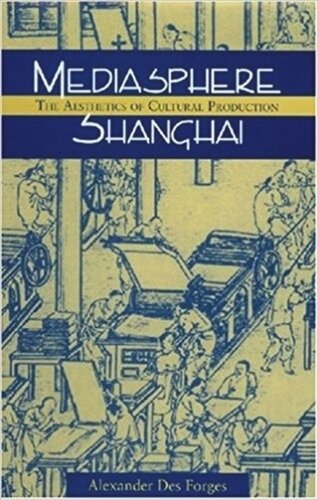

Most ebook files are in PDF format, so you can easily read them using various software such as Foxit Reader or directly on the Google Chrome browser.
Some ebook files are released by publishers in other formats such as .awz, .mobi, .epub, .fb2, etc. You may need to install specific software to read these formats on mobile/PC, such as Calibre.
Please read the tutorial at this link: https://ebookbell.com/faq
We offer FREE conversion to the popular formats you request; however, this may take some time. Therefore, right after payment, please email us, and we will try to provide the service as quickly as possible.
For some exceptional file formats or broken links (if any), please refrain from opening any disputes. Instead, email us first, and we will try to assist within a maximum of 6 hours.
EbookBell Team

4.8
34 reviewsFor many in the west, "Shanghai" is the quintessence of East Asian modernity, whether imagined as glamorous and exciting, corrupt and impoverishing, or a complex synthesis of the good, the bad, and the ugly. How did "Shanghai" acquire this power? How did people across China and around the world decide that Shanghai was the place to be?
Mediasphere Shanghai shows that partial answers to these questions can be found in the products of Shanghai’s media industry, particularly the Shanghai novel, a distinctive genre of installment fiction that flourished from the 1890s to the 1930s. Shanghai fiction supplies not only the imagery that we now consider typical of the city, but, more significantly, the very forms—simultaneity, interruption, mediation, and excess—through which the city could be experienced as a business and entertainment center and envisioned as the focal point of a mediasphere with a national and transnational reach. Existing paradigms of Shanghai culture tend to explain the city’s distinctive literary and visual aesthetics as merely the predictable result of economic conditions and social processes, but Alexander Des Forges maintains that literary texts and other cultural products themselves constitute a conceptual foundation for the city and construct the frame through which it is perceived.
Working from a wide range of sources, including installment fiction, photographs, lithographic illustrations, maps, guidebooks, newspapers, and film, Des Forges demonstrates the significant social effects of aesthetic forms and practices. Mediasphere Shanghai offers a new perspective on the cultural history of the city and on the literature and culture of modern China in general.